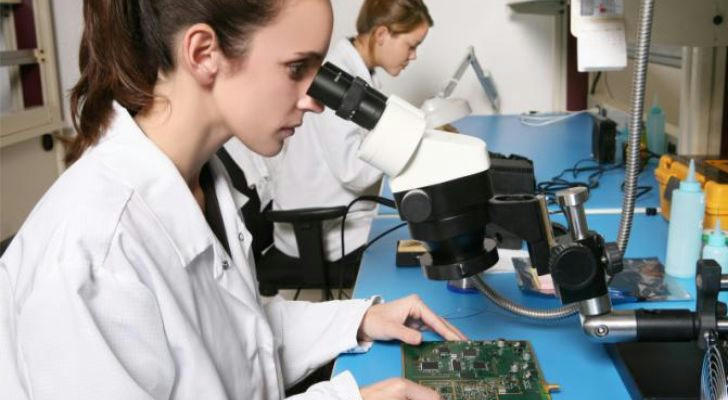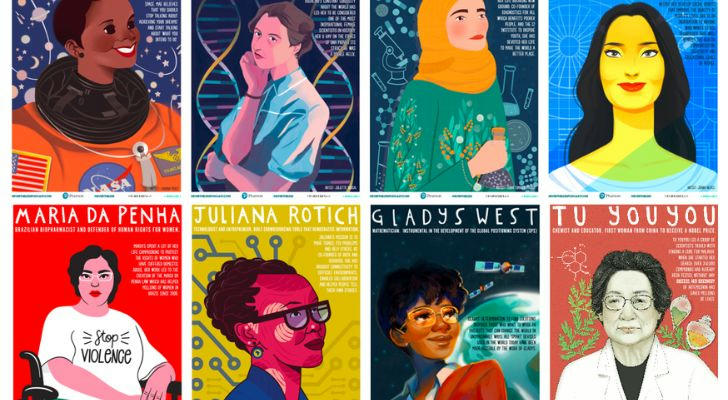📚 Education Cuts & Lifelong Learning: How Policy Changes Affect Women's Access to Science
In recent years, education cuts have become a major concern, especially for those who rely on accessible, affordable learning opportunities. For women—particularly middle-aged women—these cuts can have significant consequences, especially when it comes to lifelong learning and access to scientific knowledge. With many industries constantly evolving, staying updated is crucial. However, these cuts threaten to leave a large group of women behind.
As education funding declines, fewer women can access quality science education, limiting their opportunities for career growth and personal development. This article explores how policy changes are affecting women's access to science and technology education, and why it's more important than ever for women to continue learning throughout their lives.

💡 The Importance of Lifelong Learning for Women
Lifelong learning refers to the continuous, voluntary pursuit of knowledge for personal or professional development. For women, especially those who have taken time off work to raise families or deal with other life responsibilities, re-entering the workforce or advancing in their careers can be challenging without updated skills. In a world where technology and science are integral to nearly every field, ensuring access to education is essential.
Research shows that women are disproportionately affected by cuts to education. In the United States, women make up about 56% of undergraduate students, yet many of them face greater barriers to advanced degrees or fields like STEM (Science, Technology, Engineering, and Mathematics). When funding cuts impact public universities or adult education programs, these barriers become even higher, especially for women who have less access to paid leave, financial support, and other resources.
🎓 How Education Cuts Affect Access to Science for Women
With policies that cut education funding, particularly in public institutions, women are often left behind. As the cost of higher education rises, many women are forced to forgo their education or settle for lower-quality learning experiences. For those hoping to enter or advance in scientific fields, this situation is particularly troubling.
In 2019, the National Science Foundation (NSF) reported that although women now earn about 40% of the bachelor's degrees in STEM fields, their representation drops as they advance to graduate school or enter the workforce. One key factor behind this decline is lack of financial support. With fewer scholarships, grants, and affordable learning options available, many women face financial and logistical barriers that prevent them from pursuing advanced science degrees.
🔬 The Consequences for Women's Careers in Science and Technology
Women are particularly impacted by education cuts because they often face unique challenges in advancing their careers in science and technology. Gender bias still exists in many industries, especially in science, where women often face fewer opportunities for career advancement. As these opportunities diminish due to financial constraints, women may be forced to leave the workforce or choose fields that are less dynamic, less competitive, or less aligned with their interests.
For instance, research from the American Association of University Women (AAUW) shows that women in STEM fields earn lower wages than their male counterparts, even with similar qualifications. While this gap has narrowed over time, women still face barriers that can prevent them from reaching their full potential in these fields. Education cuts often exacerbate this issue, leading to fewer women entering or staying in science-based careers.
💡 Key Point: Policy changes that make education less accessible disproportionately affect women, particularly those in marginalized communities, who may already face systemic barriers in education and employment.

👩🔬 The Role of Public and Private Support in Lifelong Learning
While education cuts may be an unfortunate reality in many places, public and private institutions have the potential to create opportunities for women. For example, initiatives like online courses (MOOCs) and corporate-sponsored training programs offer accessible ways for women to stay engaged with the sciences. By offering scholarships, mentorship programs, and other forms of support, these initiatives can help bridge the gap.
Programs such as Code Academy, Coursera, and Khan Academy provide online resources that make learning science and technology more accessible, particularly for women who might otherwise be excluded from traditional educational systems. These platforms offer flexible learning schedules, making it easier for women with familial or work obligations to gain new skills.
Moreover, businesses are increasingly offering on-the-job training to help employees build scientific expertise without needing a formal education. Women can take advantage of these opportunities to learn new skills that keep them competitive in the workforce.
📈 The Economic Impact of Education Cuts on Women in Science
Cuts to education funding don’t just affect women personally—they have a broader economic impact as well. Studies show that investing in women’s education boosts economic growth, with women contributing significantly to the global workforce when given the right opportunities. A report from the World Bank highlights that closing the gender gap in education could add $12 trillion to the global economy by 2025. Conversely, education cuts restrict the growth potential of women and hinder their economic independence.
When women have the chance to access high-quality education, they contribute more effectively to society. In the science and technology sectors, they bring fresh ideas, innovation, and problem-solving abilities. Reducing access to these fields harms not only individual women but also industries that could benefit from a more diverse workforce.

📌 What Needs to Change: Ensuring Access for All Women
To address the challenges posed by education cuts, a few critical changes are needed:
Increased Funding for Adult Education
Women who may have taken time off from their careers often need flexible, affordable education options. Supporting adult education programs is key to helping these women re-enter the workforce or enhance their skills in science and technology.Policies to Address Gender Disparities in Education
Governments and educational institutions must create policies that specifically target gender disparities in science, technology, engineering, and mathematics fields. This includes providing scholarships, creating mentoring programs, and addressing unconscious bias in STEM education.Corporate Support for Lifelong Learning
Employers should offer more programs that enable employees, particularly women, to stay up to date with the latest scientific advancements without the financial burden of expensive tuition.
🌟 Conclusion: Empowering Women Through Education
Education cuts may be a reality in many parts of the world, but they should not define the future of women in science. With the right support, women can continue to access education and remain engaged in scientific fields. It is crucial that policymakers, institutions, and businesses come together to ensure that women have the tools, resources, and opportunities to thrive in an ever-changing world.
As society continues to evolve, lifelong learning is not just a nice-to-have—it’s a must. And for women, particularly those in middle age, access to education can make the difference between stagnation and success. Let’s ensure that all women have the chance to explore their potential in science and beyond.
📚 Knowledge is power. The more women can access education, the more they can reshape the world of science for the better.
